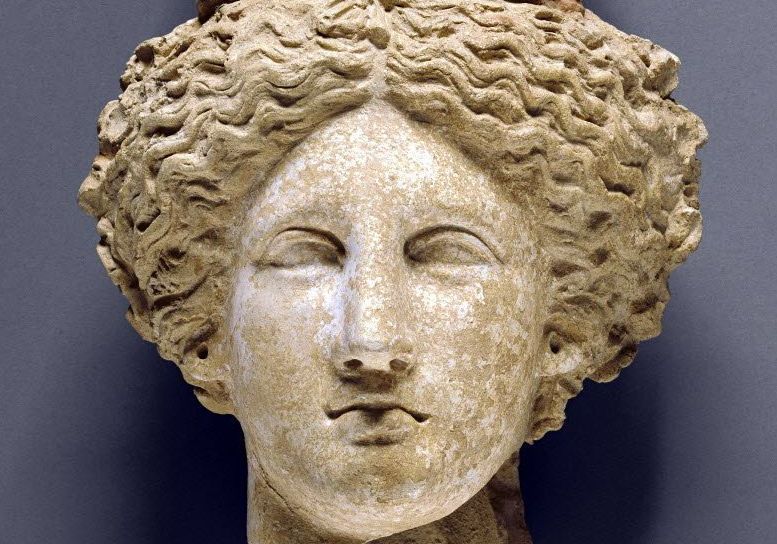Sicily has canceled a major traveling exhibition of ancient treasures scheduled to open Sept. 29 at the Cleveland Museum of Art.

For the Cleveland museum, the second venue for “Sicily: Art and Invention between Greece and Rome,” the sudden loss leaves a large hole to fill in its calendar -- and rising worries about the changing climate for international loan exhibitions.
“It’s very disappointing,” said Cleveland museum Director David Franklin. “These things don’t happen very often in the art world. This is unprecedented for me and I think unprecedented for all of us.”
Franklin said he worried that countries rich in archaeological treasures would be further encouraged by Sicily’s actions to ask for higher loan fees to borrow ancient treasures for exhibitions, which could damage scholarship and push nonprofit art museums out of the field in favor of for-profit companies that specialize in exhibitions.
The for-profit model, he said, “will push intellectual justification for the loans to the side.”
Mariarita Sgarlata, Sicily’s highest cultural official, who bears the title of assessor, was not immediately available for comment today.
In response to a list of questions about the possibility of the cancellation, emailed on Tuesday, Emiliano Colomasi, Sgarlata’s spokesman, said he had forwarded the questions to her and that he hoped she would respond soon.
“The assessor these days is very busy and wants to respond in person without delegating to anyone,” Colomasi said by email.
The New York Times reported on June 21 that Sgarlata and other Sicilian officials wanted the treasures on view at the Getty returned because they had been absent too long from Sicily.
The article said that the long absence of two star attractions, a 6-foot-tall statue of a charioteer and an elaborate gold libation bowl, or phiale, was depriving Sicily of tourist dollars.
In an email to the ‘Times, Sgarlata said: “How would an American tourist react who, trusting his Frommer’s travel guide, has gone out of his way to visit the island of Mozia to admire this work of art [the charioteer] in its original setting, only to discover that the statue is in Tokyo or St. Petersburg?”
The Getty and the Cleveland museum, which co-organized the exhibition, framed the show as the first major examination of ancient Sicilian art and culture. Its aim was to draw attention to the region as an important center in the ancient world, not simply a colony of Greece and an outpost of Rome.
Franklin said the exhibition enjoyed strong support from the Italian Cultural Ministry in Rome, but that Sicily, where recent elections brought a new party to power, enjoys significant cultural autonomy.
Sgarlata told the Times that Sicily never signed a contract guaranteeing the exhibition loans.
Franklin said the Cleveland museum has typically organized international loan shows without initial contracts, which typically come later in the process.
“The works usually travel before there is a formal agreement,” he said. “That comes at the end of the process. It’s the way things are done; it’s a very trusting and very elegant way of doing business. We had no reason to suspect that our agreement [with Sicily] was in any way undermined by anything. This was a deep surprise and goes contrary to the way exhibitions travel in the world today. But of course it’s a wake-up call to all of us to rethink how we do international exhibitions.”
Franklin said he viewed the motivation behind Sicily’s withdrawal as “purely a political situation” rooted in the economic difficulties of Italy, which is in a deep recession with high unemployment among its young.
“They have every responsibility and right to see how they can improve their economies through tourism,” he said.
Franklin said he was involved in discussions with the Getty and American and Italian diplomatic officials over the Sicily show, but that the Getty had taken the lead in the conversations.
The Cleveland museum will announce in several weeks how it plans to fill the large temporary exhibition galleries intended for the Sicily show. Franklin said it was likely the museum would draw on its growing collection of contemporary art to fill the sudden gap in the calendar.
The cancellation of the Sicily show is a significant bump on the museum’s pathway to the completion of its eight-year, $350 million expansion and renovation, scheduled for late December.
The exhibition was organized in part as a demonstration of friendship between Italy and American art museums after the Getty, the Cleveland museum and other institutions returned objects to Italy that the country said had been looted and handled by traffickers.
Franklin, a specialist in Italian Renaissance art, said he has no worries about long-term repercussions with Italy and that relations between the country and the Cleveland museum remain strong.
In particular, the Sicilian controversy will not affect plans for an exhibition Franklin is organizing on the Italian painter Caravaggio and his work in Naples.
“In the end, we have to respect the decision Sicily made,” Franklin said. “And frankly we hope we can work with Sicily again. We don’t end with any acrimony here.”
Author: Steven Litt | Source: The Plain Dealer [July 10, 2013]
VIA «Sicily cancels a major exhibition of ancient treasures at the Cleveland Museum of Art»